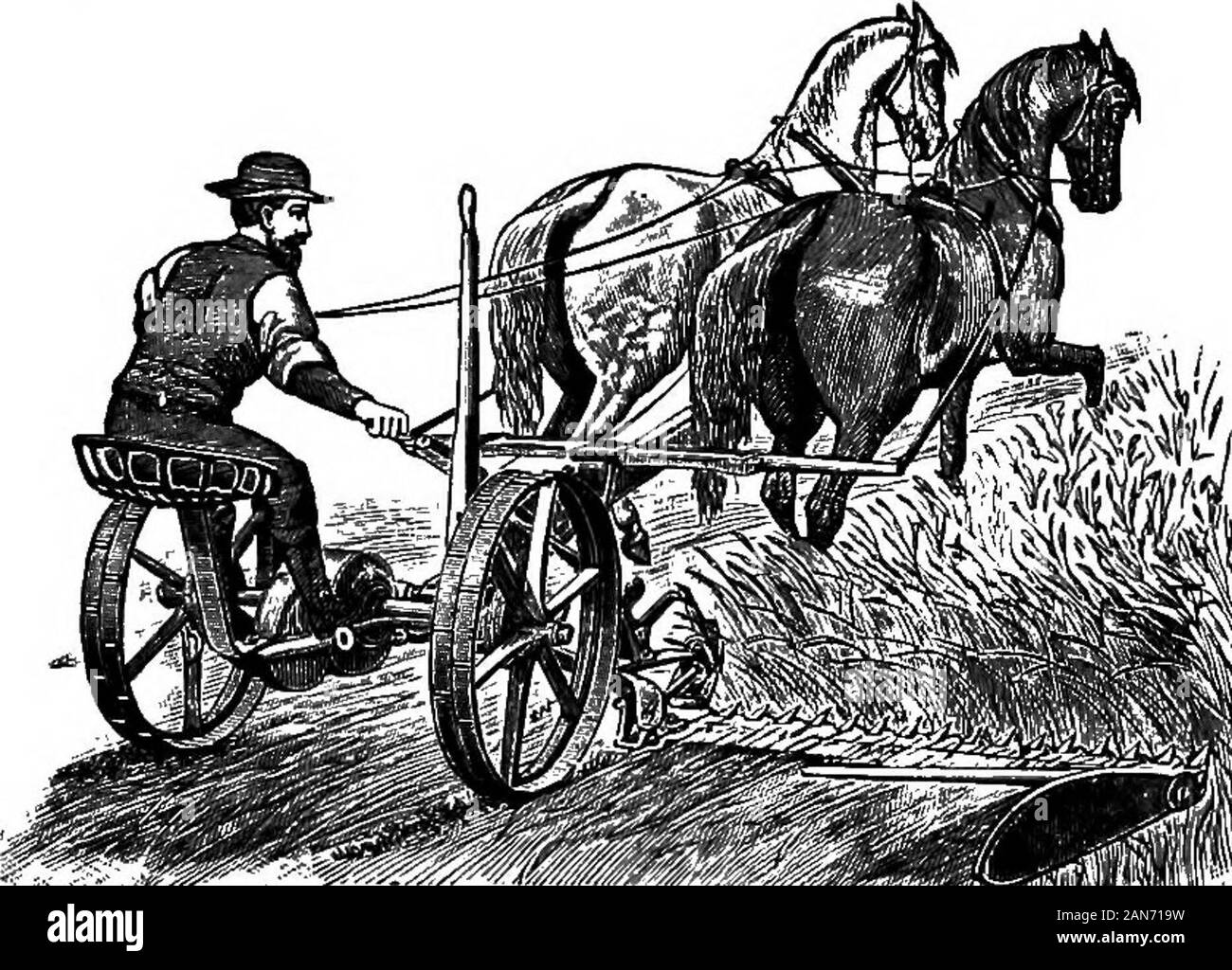Manual of agriculture, for the school, the farm, and the fireside . ugar; these,with the nitrogenous compounds which are also mostabundant at this time, are of the highest value forsupplying nutriment to animals. 729. After flowering, and as the seed forms andripens, the starch, sugar, &c., are gradually changedinto woody fibre, which is nearly insoluble and innutri-tions. 730. This fact is well established, and shows thatgrasses in general should not be allowed to stand afterthe time of flowering. There is, indeed, a great dealof nourishment in the ripe seed; but not enough tomake up for the

Image details
Contributor:
The Reading Room / Alamy Stock PhotoImage ID:
2AN719WFile size:
7.1 MB (546.4 KB Compressed download)Releases:
Model - no | Property - noDo I need a release?Dimensions:
1864 x 1340 px | 31.6 x 22.7 cm | 12.4 x 8.9 inches | 150dpiMore information:
This image is a public domain image, which means either that copyright has expired in the image or the copyright holder has waived their copyright. Alamy charges you a fee for access to the high resolution copy of the image.
This image could have imperfections as it’s either historical or reportage.
Manual of agriculture, for the school, the farm, and the fireside . ugar; these, with the nitrogenous compounds which are also mostabundant at this time, are of the highest value forsupplying nutriment to animals. 729. After flowering, and as the seed forms andripens, the starch, sugar, &c., are gradually changedinto woody fibre, which is nearly insoluble and innutri-tions. 730. This fact is well established, and shows thatgrasses in general should not be allowed to stand afterthe time of flowering. There is, indeed, a great dealof nourishment in the ripe seed; but not enough tomake up for the loss in the stalk and leaves, if themowing is put off till the seed is ripe. Grasses fully ripewill make hay little better than straw. 731. Grass is cut either by hand with the commonscythe^ or by the mowing macliine, (Fig. 36.) With the THE MOWING MACHINE. 209 fornaer, a good mower will go over an acre a day. Withthe latter, on smooth land, two horses and one man willmow at the rate of an acre an hour, or from ten to twelveacres a day, without over-exertion.. Fig. 36. 732. Besides mowing so much faster, the machine alsospreads the grass evenly, saving the labor of spreadingby hand. It also enables the farmer to cut all his grassnearer the proper time, and he is not obliged to let a partof it stand till it is too ripe. 733. After being cut, the grass should be frequentlyspread and turned, so as to dry as rapidly and asuniformly as possible. This may be done by hand with acommon fork, or by a machine called a hay-tedder, alight revolving cylinder set with tines and drawn by onehorse, by means of which the grass may be constantlystirred and kept in motion, and much time and labormay be saved. 734. When grass is partially or wholly cured, it maybe raked by hand, or by a horse-rake (Fig. 37.) B^ 210 THE HARVEST.